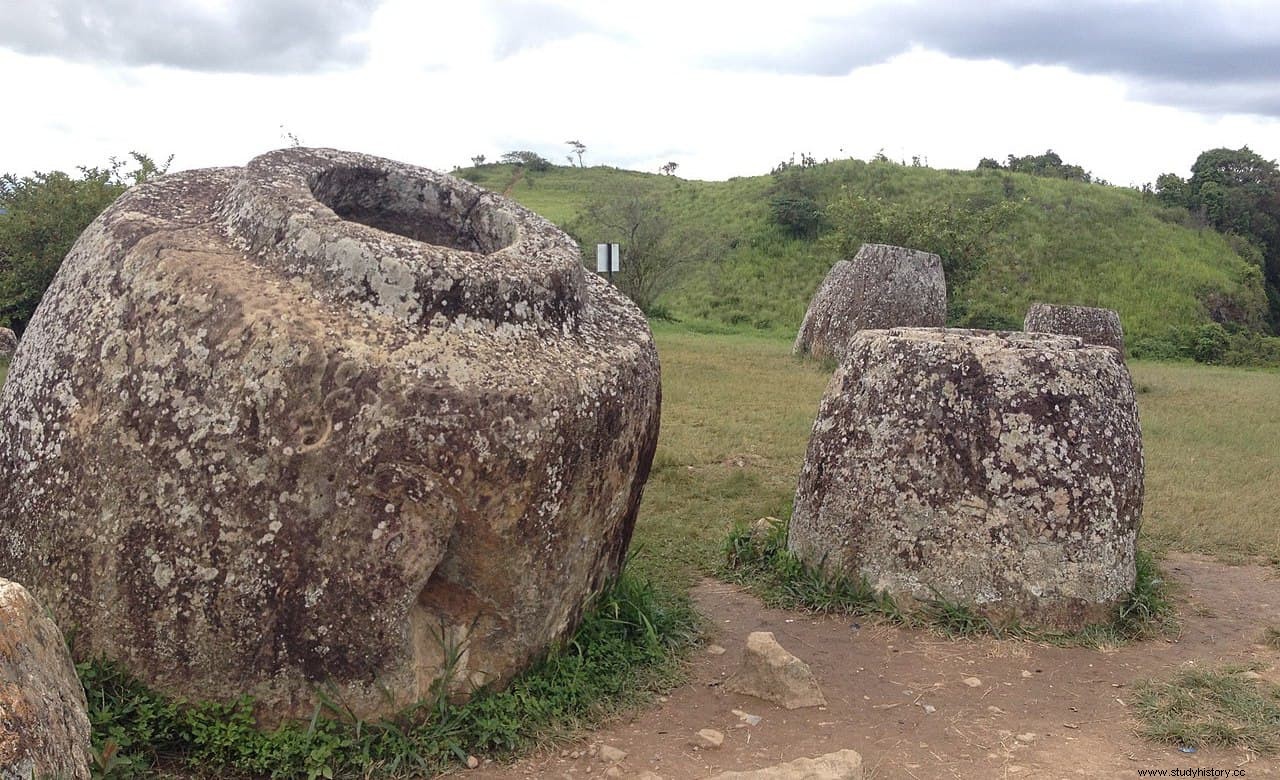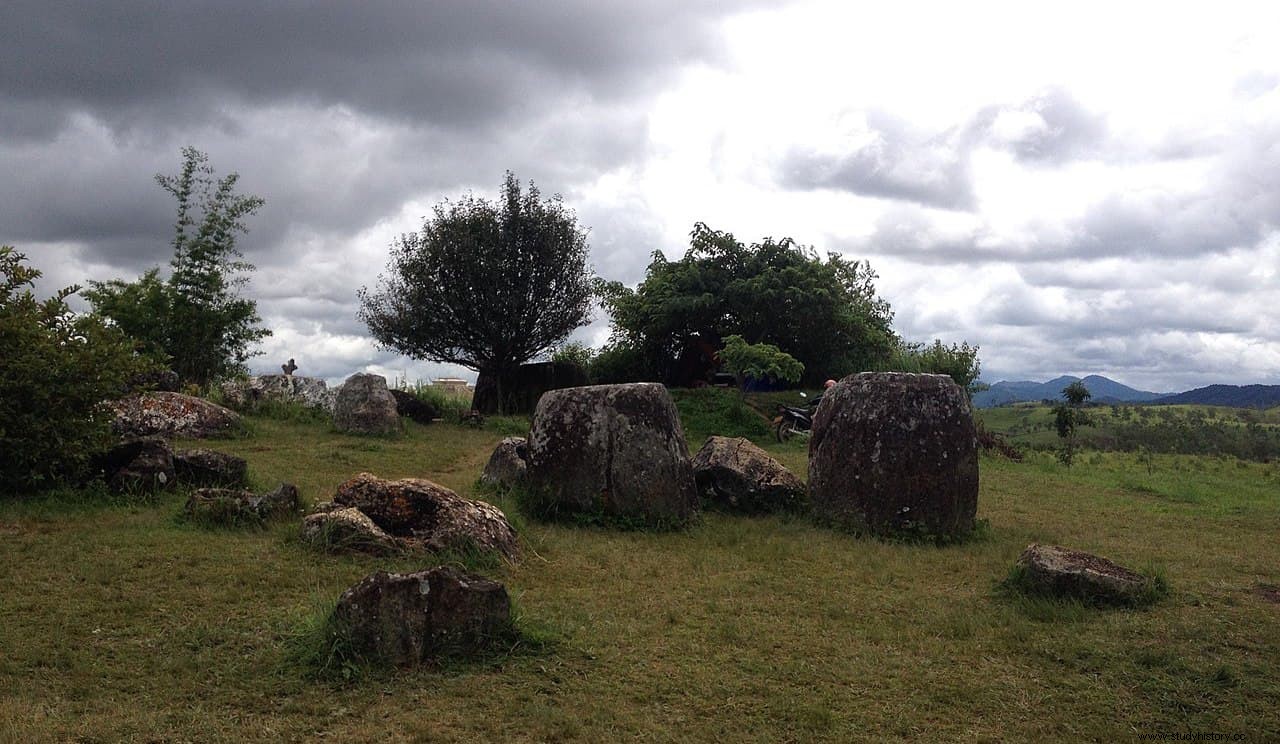Imagine a field strewn with huge stone vases . Large vases capable of sheltering a person and that seem to sprout from the ground, forming a landscape worthy of Game of Thrones or some other fantasy story from a visionary filmmaker, imaginative writer, or sci-fi comic book artist. Only there really is such a place and it's in Southeast Asia; in Laos specifically and they call it the Plain of Jars .
That plain, which is located at the foot of the Annamite mountain range, the most important of the Indochinese peninsula, in the northern highlands, is actually called Xiangkhoang but it is already more popularly known by the name given to it by those singular megalithic elements . And that they are not recent:the chronological dating points to a millennium and a half or even two in its oldest pieces -the Iron Age-, although most of them are somewhat more recent, dated between the 6th century BC and the 9th century AD.

In other words, they cover a fairly wide temporal spectrum, which is a mystery since, despite this, which culture is unknown. ascribe them. A hole in knowledge that has favored the origin and spread of legends about its origin; some have a mythological undertone and speak of a people of giants led by a warrior king called Khun Cheung , who, after a memorable battle, ordered to place the jars full of viands to celebrate the victory with his men. Of course, archaeologists and anthropologists look for other, more plausible explanations.

For example, there are those who proposed the theory that they were used to collect rainwater during the monsoon season, in anticipation of the dry season, thus serving so that members of the commercial salt caravans that crossed the area could drink. This hypothesis does not seem probable but it does have a point of truth:the Xiangkhoang plain was a crossing point for those caravans on their way to northern India and perhaps the travelers deposited offerings inside the jars. In fact, there are similar pieces in Thailand and India.
The most accepted explanations point to a funerary use , based on certain complementary findings and analyzes of both the jars themselves and their contents, since a good part of them housed human remains . Although not all, many bones show evidence of incineration and they are covered in ash (sometimes accompanied by ceramics and iron and bronze tools), something that according to the French archaeologist Madeleine Colani , who excavated the plain in the thirties (by the way, taking a few to her country), would explain the presence in a nearby cave of a kind of chimney:it would be a crematory oven and the pitchers funerary urns.
However, it is not something that all experts accept and others believe that although the plain can be considered a necropolis, the oven was not intended to cremate corpses but to make jar molds . This is also refuted because the material they are made of is not metal but stone :fundamentally sandstone but others of granite, conglomerate, limestone and, some, even coral. These differences also affect their shapes, since some have a rounded appearance, like large amphorae, compared to those that are rather angular. Most of them show no decoration, except for a few with bas-reliefs and/or paintings.

They do have in common the forceful dimensions, between one and three meters high , weighing from one to six tons; few conserve the lid -they must have been made of wood and have been lost-. They are spread over an area of twenty-five hectares, numbering hundreds (some grouped and others solitary) and are accompanied by other elements such as elongated and fine stone slabs of unknown technique and function.
All these enigmas will still remain without a definitive explanation for a long time, since the place was severely punished during the Vietnam War and except for the aforementioned Colani case, it remained a virgin until 1994. That's because there are hundreds of unexploded bombs launched by US aircraft that prevent normal archaeological excavations from being carried out, except at very specific points. Since 2004, a cleaning campaign has been carried out in this sense, also with a view to tourism and its incorporation into the World Heritage of UNESCO.
In 2021 a team from the University of Melbourne, the Australian National University and the Department of Lao Heritage solved the mystery of their origin and dating:They solve the mystery of the origin and dating of megalithic jars from Laos
